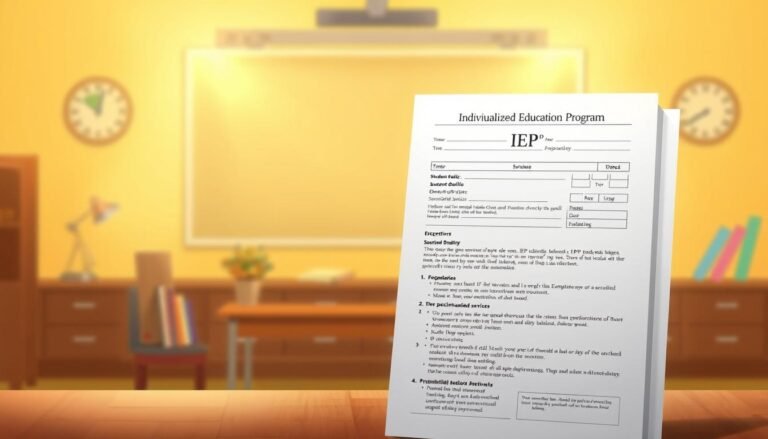From School to Success: Essential Transition Strategies for Young Adults with Learning Disabilities
Introduction
Transitioning from school to the workforce or further education can be a challenging journey for any young adult. However, for those with learning disabilities, this transition often comes with unique hurdles and complexities. The importance of effective transition strategies cannot be overstated, as they can significantly influence both immediate outcomes and long-term success. In this article, we will explore the From School to Success: Transition Strategies for Young Adults with Learning Disabilities that can empower these individuals to confidently navigate their future.
The Importance of Smooth Transitions
The transitional phase is a critical time in a young adult’s life, often characterized by uncertainty and exploration. For individuals with learning disabilities, this phase can present additional challenges that necessitate tailored strategies and support systems. Focusing on the gap between educational settings and real-world responsibilities is essential to ensure inclusivity and accessibility, leading to fulfilling careers and personal growth.
Understanding Learning Disabilities
Learning disabilities (LD) encompass a variety of disorders which affect communication, reading, mathematical skills, and other learning processes. It’s vital to recognize that these disabilities are not indicative of intelligence or potential; instead, they require alternative approaches in educational and occupational settings.
Key Types of Learning Disabilities:
- Dyslexia: Impacts reading and language processing.
- Dyscalculia: Involves difficulties with numbers and mathematical concepts.
- Dysgraphia: Relates to difficulties with writing and fine motor skills.
- ADHD: Affects focus and organizational skills.
Each of these disabilities can pose unique challenges during the transition process, requiring personalized transition strategies.
Transition Strategies
The From School to Success: Transition Strategies for Young Adults with Learning Disabilities can be divided into several core areas:
1. Self-Advocacy and Awareness
Case Study: Mark’s Journey to Self-Advocacy
Mark, a young adult with ADHD, struggled for years with organization and meeting deadlines. After attending a self-advocacy workshop during his final year of high school, he learned to express his needs effectively. Mark’s newfound ability to communicate his learning style to potential employers helped him secure an internship aligned with his strengths.
Relevance: Mark’s case showcases how self-advocacy empowers young adults with learning disabilities to articulate their needs and strengths to future employers or educators.
2. Goal Setting and Career Exploration
Table 1: Goal Setting Framework
| SMART Criteria | Definition | Example |
|---|---|---|
| Specific | Clearly define goals | "I want to work in a community service role." |
| Measurable | Identify metrics for progress | "I will apply to 5 internships this summer." |
| Achievable | Ensure the goal is realistic | "I will volunteer to gain experience." |
| Relevant | Align with interests and strengths | "I have always wanted to help others." |
| Time-Bound | Establish a deadline | "I will complete my applications by July." |
Goal Setting: Teaching young adults to establish SMART goals can help them navigate career exploration phases. Applying this framework equips them with the necessary tools to assess their progress, providing structure amidst the uncertainty of transition.
3. Engaging in Vocational Training
Vocational training offers hands-on experience tailored to specific industries. Young adults with learning disabilities can gain invaluable skills through such programs, greatly enhancing their employability.
Case Study: Sarah’s Path to Vocational Success
After high school, Sarah enrolled in a culinary program designed for individuals with learning disabilities. The hands-on training not only honed her cooking skills but also improved her confidence. Sarah now works in a local restaurant while mentoring other young adults in the program.
Relevance: Sarah demonstrates that vocational training can bridge the gap between education and practical application, facilitating smoother transitions into the workforce.
4. Social Skills and Communication Training
The ability to understand social cues and communicate effectively is essential in the workplace. Programs focusing on soft skills development can provide critical support.
Table 2: Social Skills Curriculum Breakdown
| Component | Description |
|---|---|
| Understanding Cues | Teach recognition of non-verbal signals |
| Role-Playing | Simulate workplace interactions |
| Effective Listening | Encourage active listening techniques |
| Conflict Resolution | Teach negotiation and problem-solving skills |
Implementation of Social Skills: Integrating these educational components helps prepare young adults for the nuances of workplace dynamics.
5. Collaboration with Stakeholders
Engaging parents, educators, and employers creates a support network crucial for effective transitions. Building a strong communication channel ensures shared understanding and collective goal-setting.
Case Study: Community Partnerships
A local school district initiated a program where teachers collaborated with local businesses to offer internships tailored for students with learning disabilities. This partnership allowed students to gain real-world experience while creating a feedback loop that benefits both parties.
Relevance: Collaborative approaches show that multiple stakeholders involved in the transition process help create adaptive environments for young adults with learning disabilities.
Conclusion
The journey from school to success can be challenging, especially for young adults with learning disabilities. However, with the right transition strategies, these individuals can navigate their paths with confidence and assurance. Key strategies such as self-advocacy, goal-setting, vocational training, social skills development, and active collaboration can all lead to successful outcomes.
By empowering these young adults and recognizing their unique abilities and needs, society can pave the way for a more inclusive and diverse workforce. As we foster understanding and embrace these transition strategies, we open the door to a brighter future for all.
FAQs
What are learning disabilities?
Learning disabilities are neurological disorders that affect an individual’s ability to process, learn, and use information. They can manifest in areas such as reading, math, and writing.
How can I help my child with learning disabilities transition to adulthood?
Encouraging self-advocacy, helping them set realistic goals, and involving them in vocational training can assist in their transition to adulthood.
Are there specific programs available for young adults with learning disabilities?
Yes, many vocational training and support programs cater specifically to the needs of young adults with learning disabilities, focusing on essential life skills and job readiness.
How can employers better support employees with learning disabilities?
Employers can provide reasonable accommodations, engage in open communication, and foster an inclusive environment that values diverse skill sets.
- What role does technology play in aiding individuals with learning disabilities?
Assistive technology can provide significant support, offering tools that enhance learning, promote organization, and streamline communication for those with learning disabilities.
In conclusion, the strategies discussed herein embody the notion that with the right support and understanding, transitioning from school to the workplace can be a successful achievement for young adults with learning disabilities. Through collaboration, preparation, and empowerment, these individuals can truly thrive.
















